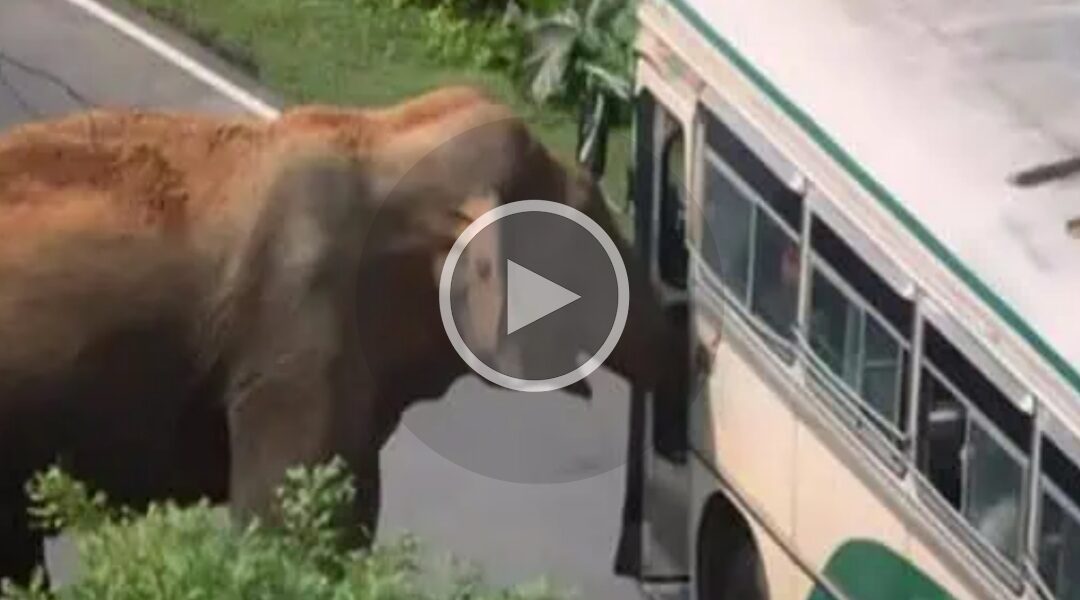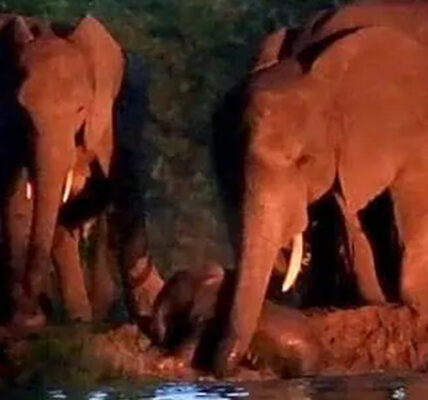On a winding road through Sri Lanka’s southeastern wilderness, an extraordinary local legend has emerged — a wild elephant named Raja, affectionately known by villagers and travelers alike as “the tax collector.”

Each morning, as the sun begins to rise over the Buttala–Kataragama road, Raja takes his post. Towering and calm, the 40-year-old elephant positions himself near a curve in the road, where he waits patiently for vehicles to pass. And when they do, he does something that has made him one of the most beloved — and viral — elephants in the country.
He stops them.
Not out of aggression or menace, but with quiet, deliberate confidence. He approaches slowly, his trunk extended toward the open windows of buses and trucks, as if to say, “Payment, please.”
But Raja’s “tax” isn’t money — it’s fruit, vegetables, or the occasional handful of snacks. Drivers and passengers, both locals and tourists, now come prepared. Bananas, pineapples, coconuts, sugarcane — Raja accepts them all with gentle precision.

The exchange is strangely human. The elephant never rushes, never roars. He simply waits for his toll, takes it politely, and steps aside, allowing the car to pass. Then he moves to the next one.
Over time, his routine has become a kind of roadside ritual. People have come to expect him, to smile at the sight of him. Videos of Raja’s “duties” have flooded social media — travelers laughing nervously as his great trunk searches their windows for treats, locals calling out his name fondly: “Raja! Tax time again?”
In a country where elephants are both revered and endangered, Raja has become something rare — a bridge between two worlds.
Wildlife enthusiasts call him an ambassador for coexistence — a reminder that humans and animals, when met with respect and understanding, can share the same space peacefully. His demeanor has earned him praise as a symbol of Sri Lanka’s gentle relationship with nature.
Yet, behind the charm, conservationists warn of the hidden dangers.
Experts caution that while Raja’s friendliness appears harmless, feeding wild elephants can create dependency and alter their natural instincts. Elephants accustomed to human food may begin approaching vehicles more frequently — not all of them as calmly as Raja. In rare cases, such interactions can lead to accidents or conflict.
“The affection people have for Raja is understandable,” one wildlife official said, “but the best way to love him is to protect his wildness. Let him stay an elephant — not a roadside beggar.”
Authorities have begun monitoring Raja’s activity closely, working with local communities to raise awareness about responsible tourism. Their goal is to find balance — preserving the safety of travelers while ensuring Raja continues to thrive freely in his natural environment.
Still, for those who’ve met him, the encounter is unforgettable. To look into Raja’s calm, intelligent eyes — to feel the brush of his trunk as he gently accepts a banana — is to experience a rare, almost sacred connection with nature.

He’s not just a spectacle. He’s a story — one that speaks to the complex, beautiful relationship between humans and wildlife.
As one traveler wrote after meeting him:
“It felt like meeting an old soul. He didn’t want to hurt anyone. He just wanted to be seen.”
And maybe that’s what makes Raja so special. In a world that often rushes past the wild and the wondrous, he reminds us to stop — to look, to listen, to share — and to remember that kindness, even between species, can be as simple as an open hand and a piece of fruit.




